Every day we field questions from operators about the FAA’s NextGen initiatives. This tells us there is still significant confusion about the various acronyms associated with NextGen.
What You Need to Know About the ADS-B Mandate
Here are some of the more common questions surrounding the many acronyms and which acronym applies to which solution.
ADS-B (Automatic Dependent Surveillance-Broadcast). A cooperative system that transmits digital information regarding the identity, velocity and position of the aircraft to ATC (Air Traffic Control). This is a mandated item. Every aircraft planning on flying in controlled airspace after December 31, 2019, will need to have ADS-B Out. To comply with the ADS-B Out mandate, aircraft need a 1090-MHz Mode S extended squitter transponder combined with a certified GPS (Global Positioning System) navigation source such as WAAS GPS. ADS-B In allows the aircraft to read ADS-B signals from other aircraft.
WAAS (Wide Area Augmentation System). A system developed to augment GPS with the goal of improving its accuracy, integrity and availability. Intended to correct GPS signal errors, WAAS collects data from ground stations and satellites, allowing aircraft to rely on GPS for all phases of flight, from takeoff through Category I precision approaches. WAAS permits the use of more fuel efficient flight planning and approaches that have reduced minimums. WAAS-approved units also incorporate navigation procedures to take advantage of preferential flight routing. To upgrade to WAAS, certified equipment appropriate for the aircraft must be installed and properly approved by the FAA or its designee.
FANS 1/A– (Future Area Navigation Systems). This is a datalink system that lets pilots and ATC communicate directly using text transmissions that appear on the CDU (Central Control Unit). It requires a certain level of navigational performance that your aircraft must meet in order to fly overseas while communicating with ATC via CPDLC.
CPDLC (Controller Pilot Data Link Communications.) This is the method of communications being used for operators flying overseas outside of VHF coverage. The aircraft must meet a certain level of precision and performance to fly in these assigned flight routes. CPDLC is the text-messaging component of FANS 1/A.
Still have questions?
- Contact the Duncan Aviation Satellite Shop (www.DuncanAviation.aero/locations/#satellites) nearest you,
- Call any one of our Duncan Aviation Avionics Installation Team Members (www.DuncanAviation.aero/services/avionics-installation/contacts), or call +1 402.475.2611 for more information.
- Visit the Duncan Aviation ADS-B web page at: www.DuncanAviation.aero/adsb
- Download our Straight Talk booklets: www.DuncanAviation.aero/resources/straight-talk


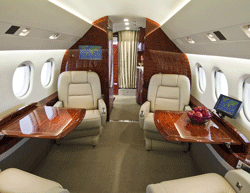 People tend to judge how a business jet has been maintained by looking at the condition of the cabin. Prospective buyers and clients will hesitate if a jet appears to be in less than good repair. Yet, interior maintenance tends to be dismissed as a merely aesthetic or unnecessary expense.
People tend to judge how a business jet has been maintained by looking at the condition of the cabin. Prospective buyers and clients will hesitate if a jet appears to be in less than good repair. Yet, interior maintenance tends to be dismissed as a merely aesthetic or unnecessary expense.
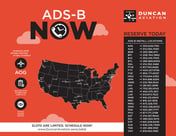


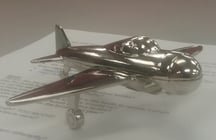
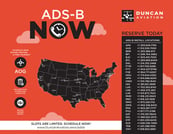 If you are not yet ready for the required upgrades and are worried about finding available capacity at certified service centers, take a look at our ADS-B Slot Program
If you are not yet ready for the required upgrades and are worried about finding available capacity at certified service centers, take a look at our ADS-B Slot Program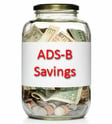
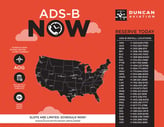 If you are not yet ready for the required upgrades and are worried about finding available capacity at certified service centers, take a look at our ADS-B Slot Program
If you are not yet ready for the required upgrades and are worried about finding available capacity at certified service centers, take a look at our ADS-B Slot Program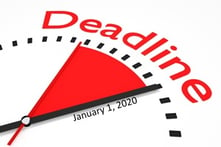
 If you are not yet ready for the required upgrades, but don’t want to get caught up in the mad rush to find available capacity at certified service centers, we are offering an ADS-B Slot Program
If you are not yet ready for the required upgrades, but don’t want to get caught up in the mad rush to find available capacity at certified service centers, we are offering an ADS-B Slot Program January 1, 2020 seems like a long way off, but if you remember previous FAA mandates the industry experienced huge backlogs because there simply was not enough hangar space to accommodate the rush of owner/operators who needed to get their aircraft into complaince. Remember the scheduling difficulties with RVSM (Reduced Vertical Separation Minimum)? You don’t? Refresh your memory here. (
January 1, 2020 seems like a long way off, but if you remember previous FAA mandates the industry experienced huge backlogs because there simply was not enough hangar space to accommodate the rush of owner/operators who needed to get their aircraft into complaince. Remember the scheduling difficulties with RVSM (Reduced Vertical Separation Minimum)? You don’t? Refresh your memory here. (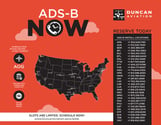 The Duncan Aviation ADS-B Splot Program allows you to buy a slot to reserve a confirmed date and hangar space for your aircraft at one of our Satellite Avionics Shops. The deposit will will applied to the ADS-B installation when you arrive.
The Duncan Aviation ADS-B Splot Program allows you to buy a slot to reserve a confirmed date and hangar space for your aircraft at one of our Satellite Avionics Shops. The deposit will will applied to the ADS-B installation when you arrive.